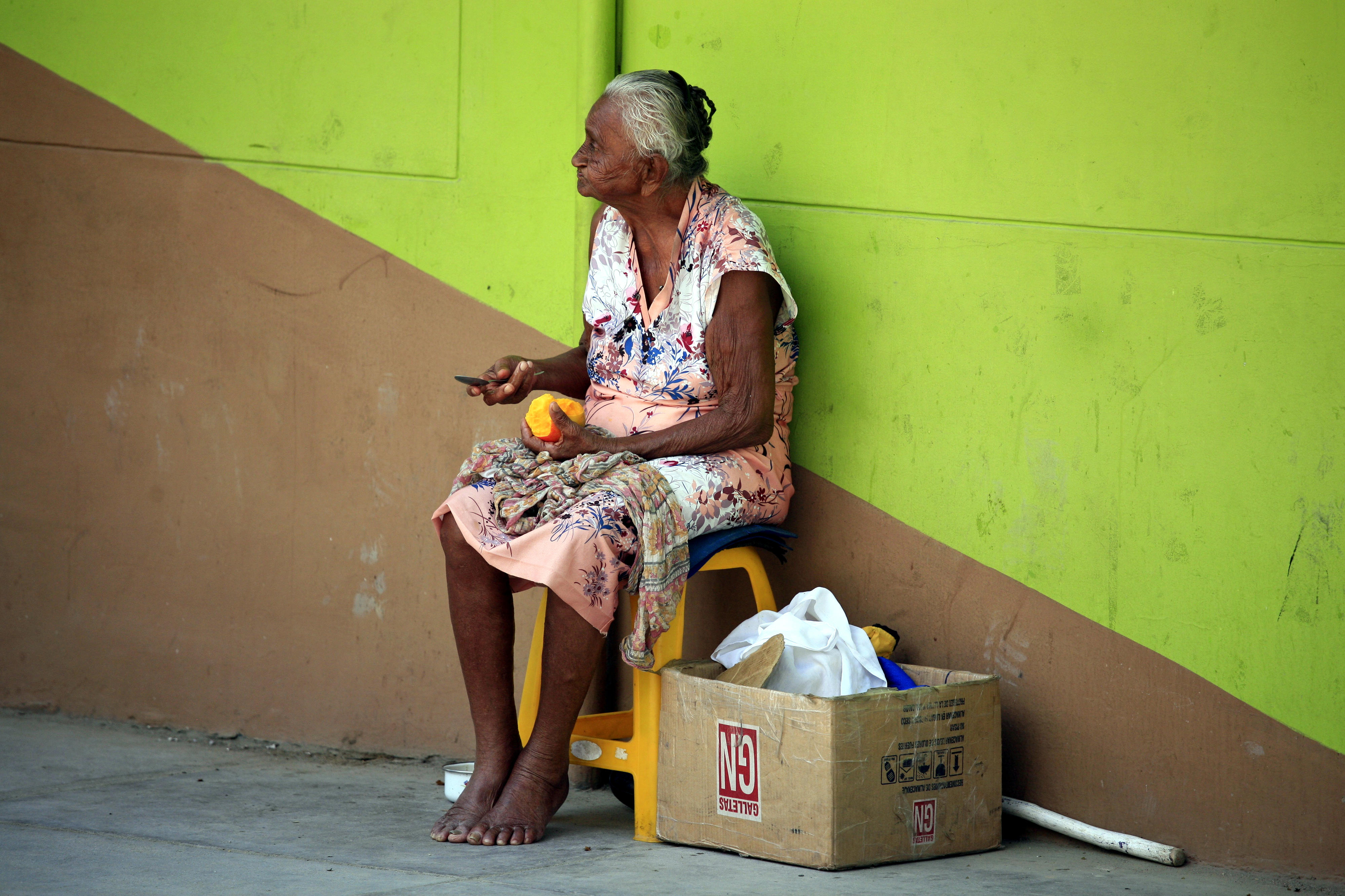Economic situation The benefits are not being felt by everyone
An older woman peeling a mango by the side of a street
This was due above all to falling commodity prices, e.g. for copper, and the economic impact of the “El Niño Costero” climate phenomenon, which caused heavy flooding in 2017. After that, the COVID-19 pandemic caused economic losses: within just one year, Peru’s gross domestic product fell by 30 per cent and the number of people in work dropped by almost seven million.
The main factors driving Peru’s economic growth are foreign trade, and extensive investments in mining and in the exploitation of natural gas. Peru is benefiting from the demand for its export goods, especially for mineral resources such as gold, copper, silver and zinc. With an annual gross national income of around 6,010 US dollars per capita, Peru has now established itself as an upper-middle-income country.
However, the natural resource sector only provides a relatively small number of jobs directly. Moreover, mining projects often lead to social conflicts. These are sparked primarily by conflicts over the use of resources, disputes relating to environmental issues and issues around how the revenue is to be distributed. The indigenous population has seen little benefit from the country’s economic upswing, and has even suffered because of it to some extent, as enterprise-based agriculture, logging and mining encroach further and further into the areas that have traditionally been the home of indigenous peoples and communities. These developments are not just threatening the sources and foundation of their livelihood. Violence towards representatives of indigenous communities has also been on the rise for years.
Up to now, however, the government’s efforts to pass on the gains of economic growth to poorer sections of the population have not been very successful. Social programmes and arrangements for transferring funds from the national to the regional level of government have only had a limited impact on rural development.
Organised crime
Organised crime is a major challenge for efforts to further strengthen the rule of law and for stabilisation in Peru. The country is the world’s second largest cocaine producing country after Colombia. Illegal trading in gold and timber and human trafficking are further lucrative sources of income for criminals, who use these activities to fund illegal financial flows and corruption, and as a channel for money laundering. Crime undermines the rule of law and deprives the country of important development resources. In some regions, the state is unable to enforce its monopoly on the use of force and to take effective action against the heavily armed criminal networks.
As at: 03/06/2022
